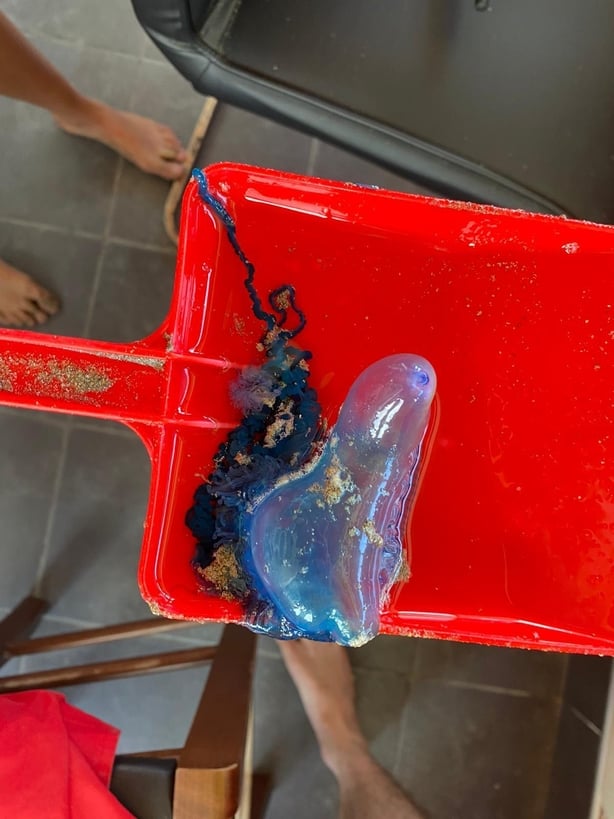The arrival of a dangerous species of jellyfish on some of Co Clare's beaches is causing concern for parents, families and pet owners who are being advised to be vigilant.
The Portuguese man o’ war can deliver a very painful sting and can be fatal for those who may suffer a severe reaction.
A number of sightings have been reported at Fanore beach in north Co Clare, also at Lahinch, Doughmore, Doonbeg and down south as far as Kilkee.
The holiday season is in full swing along the Co Clare coast, in particular at Fanore and at Lahinch, which is a popular surfing beach and draws thousands of families, children and young people who take lessons each day with the various surf schools there.
The man o’war is rare in colder North Atlantic sea waters, but can be swept up here by the wind, their navigation here helped by the distinctive blue coloured gas filled balloon like float on their bodies, and tentacles which can be up to 20 metres long and which can deliver a very painful sting.
Co Clare’s Water Safety Development Officer Clare McGrath confirmed sightings of the deadly species had been reported in recent weeks, in particular at Fanore, which can get a lot of tidal activity because of its location on the north Clare coast.

She said that lifeguards are on the lookout for them on the counties beaches and can get rid of them.
But she also appealed to people to keep themselves informed about what they look like and to be vigilant about touching them, particularly if they are seen on a beach.
"I'd be more worried about children and pets who are very curious and who are walking on the beach," Ms McGrath said.
"These siphonophores are quite distinctive and have this bluish balloon like float on their bodies, and children may be attracted to them and might poke them.
"And animals may also be inclined to approach them. Swimmers will see them instantly with their blue balloon in the water and can stay away from them.
"People should inform the lifeguards of their presence if they see them.
"If they get stung people should remove or scrape the tentacles free with something like a credit card and clean their skin with sea water to flush out the toxins."
Appearance is rare
She said the appearance of the species is rare and she doesn't want people to get too concerned or nervous which may impact their enjoyment of their holidays, but it is important that people keep themselves informed and know the difference between the various different species of jellyfish.
Ann Murphy, from Tulla in Co Clare, is on holidays in Lahinch with her daughter and nieces and is aware of the reports of the possible presence of the Man o’ war and has been asking the lifeguards for updates.
"We’ve been walking the beach and we are looking at a lot of jellyfish washed up like the common compass jellyfish and the smaller 'sailer by the wind’ species which were plentiful on Lahinch beach today," Ms Murphy said.
"But yes we are wary about the Man o’ war and the girls are asking a lot of questions about it and are being cautious about the water."
Keith Gallagher was visiting Lahinch with his family from Co Offaly and had similar concerns.
"We’ve been up at Fanore beach as well and there were a lot of jellyfish there so I was checking out a PDF on the various species to keep myself updated on what might be dangerous or not," Mr Gallagher said.
"The small 'sailor by the wind’ look like a mini man o’war with their upper body fin, but they might just give you a mild sting.
"I would be concerned about anyone getting a painful sting from the man o’ war as some might not be able to withstand a strong sting."
Ben Bennett, from Ben’s Surf Clinic, said he and the lifeguards are on duty on the beach regularly and know the risks.
"We’re here all the time, we know the risks so people should keep in touch with the lifeguards and ask questions about all sorts of water safety issues and try and keep themselves informed…..the rips and currents, the jellyfish, the weever fish who canalso give a nasty sting, and all those matters of concern to them," Mr Bennett said.
"We want everyone to be safe and to enjoy their time."







